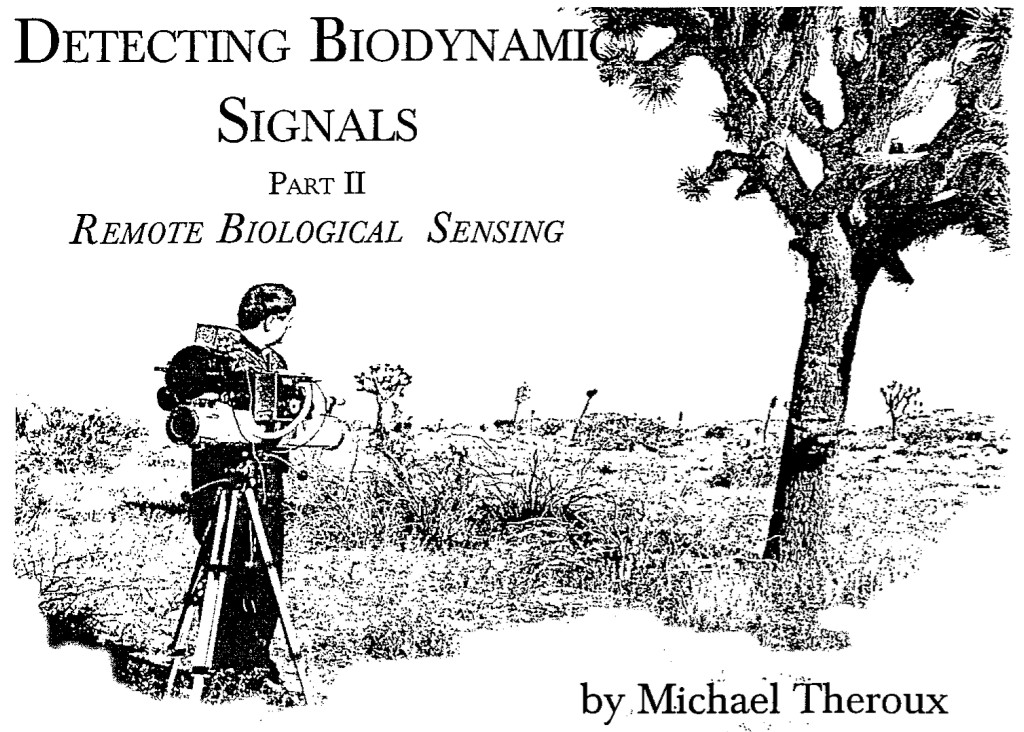
IN the last issue of this magazine, we covered some of the basic methods concerning the detection of biodynamic signals of a biodynamic character. A brief history of the work of L. George Lawrence was examined along with some practical applications of biodynamic signal detection. Since the writing of part one in this series, new and exciting information in regard to the present work and the works of L. George Lawrence has been discovered. BSRF has recently acquired patent documents, equipment, and an unpublished manuscript entitled, Galactic Life Unveiled - The Phenomenon of Biological Communication Between Advanced Life in Space and Its Subliminal Effects on Terrestrial Man, by L. George Lawrence. Examination of these materials uncovered many startling facts about the real work of Dr. Lawrence, and confirmed many assumptions we had based on our own empirical findings. Galactic Life Unveiled is a complete thesis by Dr. Lawrence based on 17 years of remote biological sensing (RBS) field studies and interstellar communications. We are currently in the process of publishing this rare book which should be available by spring of 1997.
Methods of Biodynamic Signal Translation
The plant response detector or signal processing translator detailed in "Detecting Biodynamic Signals" represents only a fraction of the equipment used in the disclosure of biodynamic signals. Dr. Lawrence utilized a system which included a telescope for sighting, a biodetector assembly containing biological transducers, electronic signal conversion equipment, EM artifact detection equipment, and a video attachment for the production of biograms. In the eighty page patent document entitled "Methods and Receiver for Biological Data Transport", Dr. Lawrence cites five different methods of signal processing translators as follows:
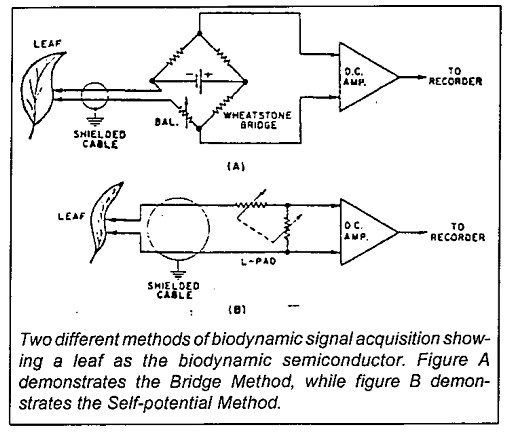
1) Bridge Method - Biological semiconductors exhibiting electrical resistance changes due to external signal impingement may be arranged in a classic Wheatstone bridge arrangement (see schematic in previous issue).
2) Capacitance Method - Biological semiconductors expressing variations of capacitance during stimulus events may be embodied to function as a frequency-control element in an oscillator of the FM type. Read-out may then be secured by means of a frequency counter or equally suited device. High [21] impedance or optical devices are used to sense given piezoelectric phenomena accompanying capacitive reactions.
3) Electrostatic Method - Biological semiconductors which are electrostatically active (active charge acquisition and depletion) as a result of local excitation and the presence of external biodynamic signal events may be read out by means of a charge-coupled device (CCD) or on photographic film.
4) Optical Method - Biological semiconductors evidencing optical properties of a primary (luminescence) or secondary (transparency alterations) type during signal incidence may be read out by means of photoelectric devices and Bragg cells.
5) Self-Potential Method - Biological semiconductors expressing changes in electrical self-potentials due to signal incidence, may be amplified by non-loading high impedance devices such as electrometers.
As we can see, there are a variety of means by which we may obtain and translate signals of a biodynamic character in biological semiconductors. It must be remembered, however, that biological materials exhibit characteristic actions of their own due to normal living cell function. It is the sensitization or excitation duty either as a service of the processing method or induced separately which will suspend these functions to secure diagnostic control over natural and inter-communicatively induced [22] responses of living cells. In our experiments, methods 1, 2, and 5, offer the most continuously successful procedure of biodynamic signal procurement, and are also the most cost effective. The repeated success of this instrumentation may be primarily due to the combinative sensitizing/receiving nature of the acquiring method.
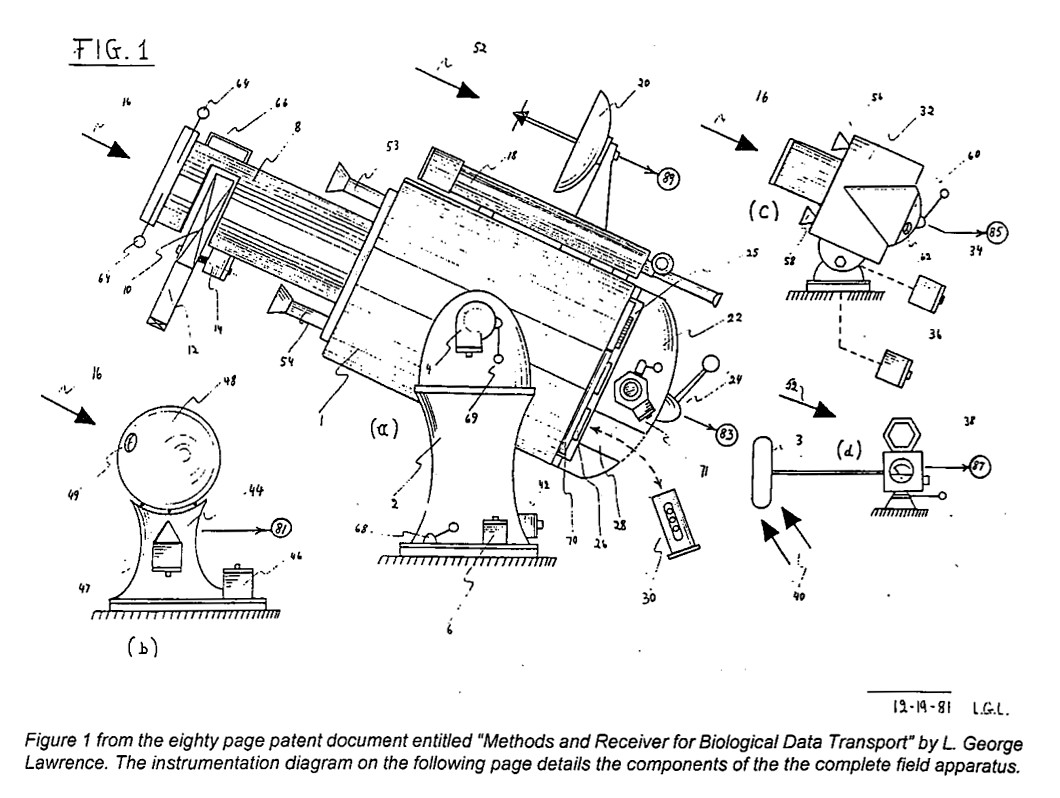
Lawrence's instrumentation diagram, Journal of Borderland Research, v.29, n.4 (July & August 1973)
Image Acquisition and Biograms
Early on in the RBS experiments, Dr. Lawrence developed a means by which biodynamic signals could be translated into video images. Although he spoke of using CCD technology as an ideal, he favored the most basic biological data display technique of using facsimile recording. This system simply injects the electrical signals produced by the biological semiconductors into a type of AM modulator. This modulates a given frequency band in such a manner so that varying amplitudes are a precise reflection of the modulating direct current product which can then be rendered into facsimile images. In our experiments, we have utilized the same protocols with greater flexibility regarding image resolution and acquisition.
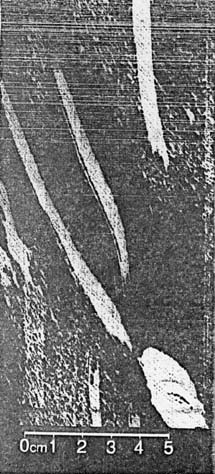
In the first system we used to produce biogram, the signal processing translator's modulated biodynamic signal output was fed directly into a PC via a Digital Signal Processing (DSP) interface (first tests were conducted on an old 80386 but for portability and speed, a Pentium 100 laptop was used). Special software was used to provide the images on the screen which could then be saved and later printed out. The Biograms we generated begin with a complex of individual frequency components and harmonics of the modulated biodynamic audio output, which covers a wide frequency range and varies in intensity over time. The software simply plots the frequency content of the biodynamic signal as a function of time with harmonic intensity represented by a variable color scale. The software uses a mathematical Fast Fourier Transform (FFT) in performing the frequency analysis. FFTs are usually specified by the number of input data points used in each calculation. For a sampling rate of F (cps), an N input point FFT will produce a frequency analysis over a frequency range of F/2. Signal amplitude will be calculated at N/2 frequency increments in this range. The software provides both narrowband and broadband processing options. Narrowband processing [23] produces a display of high frequency resolution which resolves the individual harmonics of the audio sample. Broadband processing broadens the frequency response of the FFT and produces a display which smoothes over the individual harmonics to show broad areas of intensity. To simplify, the software package samples the input, performs an FFT, and graphs the output in the form of a 3D time-frequency plot or spectrogram, where one axis is time, the second is frequency, and the vertical axis is the signal level at the specific time and frequency. These Biograms were finally extracted from the complex modulated portions of the emergent spectrographic image. Then very small sections of the image - little more than a few microseconds in duration - were enlarged to an appropriate viewing magnification. These completed Biograms could later be rendered into video presentations in a frame-by-frame sequence. While this system is not the ultimate in Biogram acquisition (mainly due to its dependence on the linear time constraints of the received signals), it presents specific imaging of the perceived biodynamic modulations. One of the major advantages of this system is that the AM modulated biodynamic signals can be recorded and stored on analog or digital media to be later played back for image processing.
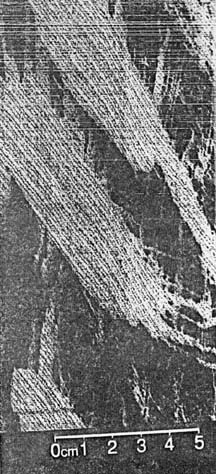
The most difficult task for the researcher lies not in the equipment setup, but in the interpretration of the acquired images. Some images will reveal distinct impressions which need little translation, but many seem fragmented and are probably simple frames in an evolving complex perpetuity. One may discern a likeness of these images to those obtained by Dr. Ruth Drown in the use of her Radiovision instrument, the De la Warr camera pictures, or the eidetic emulsions of Gerry Vassilatos. It was Dr. Lawrence's goal to secure biodynamic signal images without the need for a time dependent scanning process - to procure complete frames instantly - much like the older Radionic systems of Drown and De laWarr. Since we know the character of biodynamic information was strictly of an eidetic nature (meaning [26] that its reception is in the form of whole images), and it propagates in a longitudinal (time independent) fashion, the prior systems of instant frame acquisition would be ideal. Charge-coupled device (CCD) technology while promising, is expensive and provides a somewhat distorted biodynamic image resolution. Photographic film techniques, while procuring the highest resolution images, are time consuming and relatively unmanageable in most field situations. Work is currently in progress to modify and develop similar systems in conjunction with present technology.
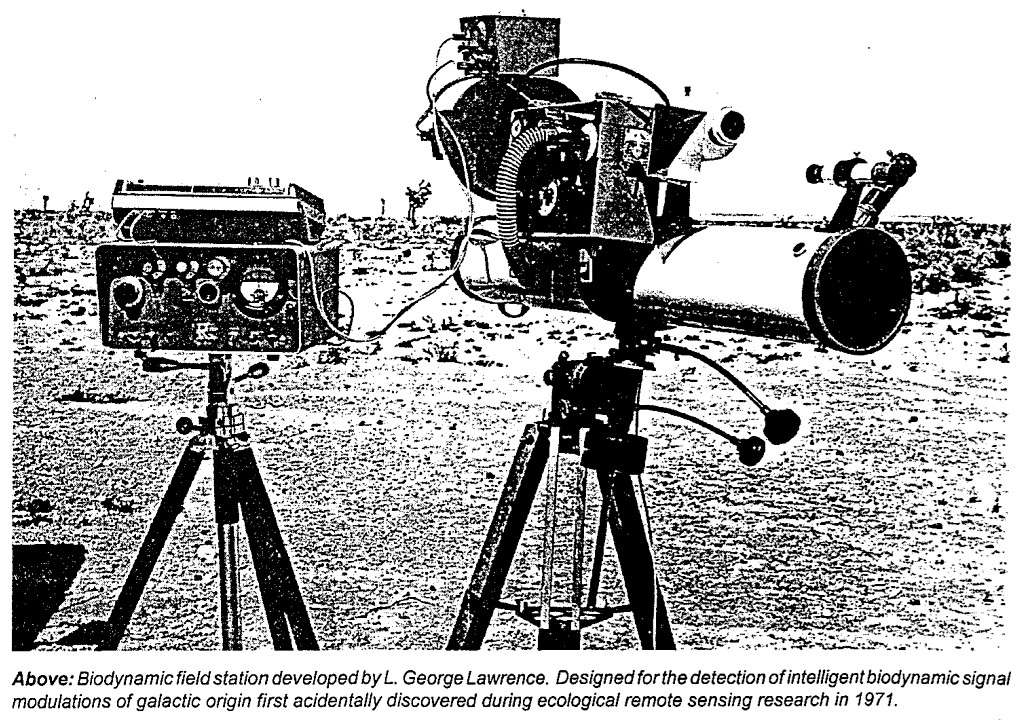
Remote Biological Sensing and Radionics
Wading through much of the technical data concerning biodynamic signal acquisition, one may lose sight of the real importance of this exciting borderland technology. This is the science of receiving living biodynamic information at a distance. Of course, we already have an example of such a technology in radionics, a qualitative science which not only possesses the ability to receive living energy, but may also transmit living energy over great distances. With the remote biological sensing system, we have no similar means of tuning or transmitting as in radionic systems, but it does possess the ability to receive patternate living information which through its electronic interface presents us with an added quantitative element to the qualitative study, and may be used in conjunction with radionic systems. It offers another means of verification in biodynamic information analysis, and can be used in connection with the more subjective use of pendulums and stick plates. Researchers working in the field of Radionics have long sought an agency of "automated detection" of radionic energy which could be directly incorporated into their instruments, and several such examples exist today. The treatment instruments of Ruth Drown, for example, included a small microammeter which would give indications when a patient was connected to the instrument via the footplates and probe. A later example would be the "RAU-2" radionics instrument of J. Gallimore. This system dispensed with the stick plate altogether, and utilized a very sensitive GSR (galvanic skin resistance) circuit with a microammeter wich would, when connected to the operator, give specific indications while tuning. The RAU-2 was designed for use in agricultural work where human operators would determine, via the response indications of the GSR, specific radionic patterns while tuning the instrument. In recent [27] experiments (see "The Borderland Experimenter, 3rd Qtr, Borderlands) such a system has been used successfully while replacing the human operator with a plant, allowing the plant to determine individual radionic "rates". Many modern instruments are now including such automated detection devices in their construction.
The applications of a remote biological sensing system are not strictly limited to living energy verification experiments. Dr. Lawrence accidentally discovered that living biodynamic signals could be received from particular locations in space, and implied that we may be constantly receiving directions or instructions of an eidetic nature from an intelligent source outside our own solar system. These experiments of Dr. Lawrence, and our own, will be detailed in upcoming issues of Borderlands.
Field Tests and Biodynamic Signal Acquisition
L. George Lawrence spent much of his time in isolated desert locations performing remote biological sensing operations. Many parts of the desert are free from electromagnetic interference which can complicate biodynamic signal interpretation, so it is an ideal place to perform experiments in remote biological sensing. As we have already discussed, Dr. Lawrence's system incorporated many instruments in his field operation system. This system is best observed in the patent figures and instrumentation diagrams.
A typical field operational setup for remote biological sensing includes the following: An astronomical telescope, a Faraday chamber that contains the biological transducer complex, a rotating shutter for "chopping" incident electromagnetic interference for easier detection, a temperature controller, a regulated power supply, a local oscillator to permit an AC-rendition (for AC recording) of the data envelope modulated by a DC amplifier, and final recording of data by a field recorder. A processing amplifier and meter provide primary, unmodulated monitoring of the incoming signals.
Initially, Dr. Lawrence conducted his field experiments with the goal of obtaining signals from living systems such as Joshua trees. He would simply inject a premeasured amount of DC electricity into the tree by remote control while training the sights of his field equipment containing the biological transducers directly on the subject tree. As the tree began to respond to the current, the biological transducers would simultaneously react to the [28] irritation experienced by the tree. Increasing the distance from the subject (up to several miles) proved no obstacle to the reception of signals with no decrease in signal intensity. With these many inaugural tests, Dr. Lawrence was able to perfect his system of the reception of biodynamic signals.
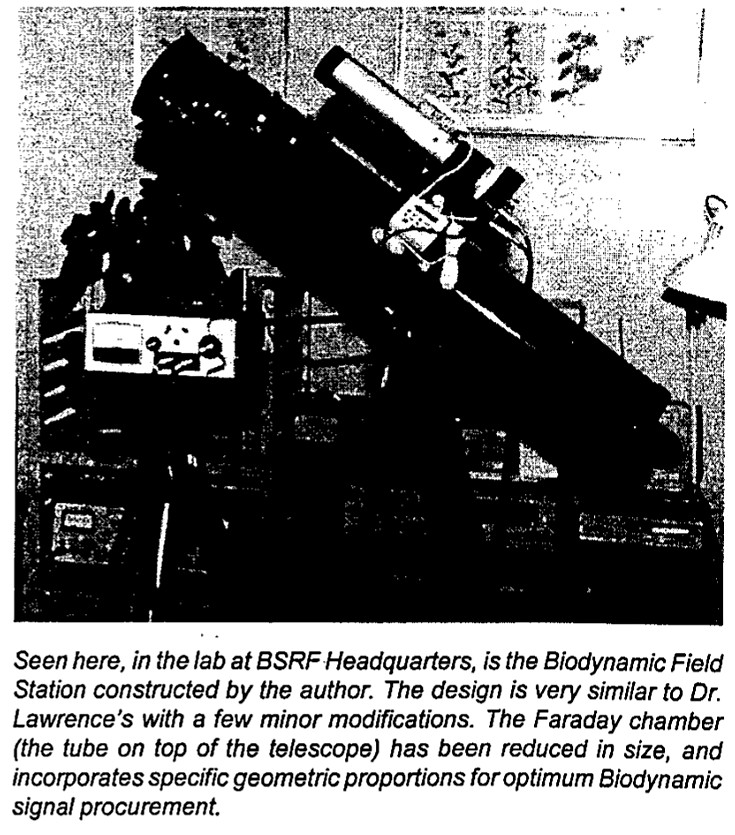
The RBS field equipment in current use at BSRF is nearly identical to Dr. Lawrence's with a few minor adaptations and modifications. In comparing the photo with the diagram, one can see that our system has been condensed into a smaller package, and this is mainly due to technological advances in the miniaturization of specific components since Dr. Lawence's day. The telescope, a 4.5 inch reflector with equatorial mount and motor drive, is standard and is identical to the one used by Dr. Lawrence. The Faraday chamber has been reduced in size, and incorporates specific geometric proportions (the Golden Section) for optimum Biodynamic signal procurement. The system is "shutterless" as incident electromagnetic interference is easily detected within the biomass cavity by a highly sensitive EM probe (newer designs in biodynamic sensor technology are completely insensitive to any EMR and need no shielding). Temperature control and monitoring is also done from within the biomass cavity. All electronics for monitoring incoming signals are housed in a single unit, and the field recorder is of the microcassette type. A countdown timer is used to indicate time elapsed, and to signal the end of the tape. In addition to the standard equipment, a laptop portable computer is used to continually render images of the modulated biodynamic signals for visual monitoring while in the field. Ancillary equipment may include star chart software, magnetometers for monitoring geomagnetic disturbances, and various other electronic devices used for detecting EM artifact.
Early lab tests with this system are quite promising, and several field trials are scheduled for the upcoming year. In Part III of this series, we will describe many species of biological transducers, present an interpretation of the eidetic content in biodynamic signal acquisition, and cover the problem of interstellar communications complete with galactic sources. For those interested in essential and related information on our topic, references, patent sources, and an extensive bibliography of the works of L. George Lawrence are included here.
Continue with "Detecting Biodynamic Signals" (Part III)
References
- Galactic Life Unveiled - The Phenomenon of Biological Communication Between Advanced Life in Space and Its Subliminal Effects on Terrestrial Man, by L. George Lawrence. Unpublished Ms. To be published late spring 1997, by BSRF. [Now available in our standard xerographic format: <#B0388, "Galactic Life Unveiled">]
- "Methods and Receiver for Biological Data Transport," L. George Lawrence. Abandoned patent, 1981.
- "Cinema 2000: The Quest for Extraterrestrial Video," L. George Lawrence, Electronics and Technology Today, March/April 1992.
- "Interstellar Communications Signals," L. George Lawrence, Ecola Institute Bulletin #72/6A, Reprinted in Journal of Borderland Research, v.29, n.4 (July & August 1973). <Full-text>
- "Are We Receiving Biological Signals from Outer Space?," L. George Lawrence, Popular Electronics, April 1991. <Full-text>
- "The Starland Galactic Transmission Theatre," L. George Lawrence. Unpublished.
- "Biological Image Transmission," L. George Lawrence, 1989. Unpublished.
Literature and Patents
- Charge and Field Effects in Biosystems, by W.J. Aston, Abacus Press, Turnbridge, UK 1984, pp. 491-498. <>
- Electrophysiological Methods in Biological Research, by J. Bures, Academic Press, N.Y., 1967. <>
- Organic Semiconductors, by F. Gutmann and L.E. Lyons, Wiley, N.Y., 1967. <>
- "Biosensors," by C.R. Lowe, Trends in Biotechnology, Elsevier, Amsterdam, 2:3, 1984, pp. 59-65.
- Biosensors: Fundamentals and Applications, by A.F.P. Turner, Oxford Univ. Press, Oxford, UK, 1987. <>
- "Sensor Having Piezoelectric Crystal for Microgravimetric Immunoassays," U.S. Patent 4,735,906, G.J. Bastiaans, April 5, 1988. <https://www.google.com/patents/US4735906>
- "Immunoassays For Antigens," U. S. Patent 4,242,096, Oliveira, R.J. and S.F. Silver, December 30, 1980. <https://www.google.com/patents/US4242096>
- "Sandwich Immunoassay Using Piezoelectric Oscillator," U.S. Patent, 4,314,821, T.K. Rice, February 9, 1982. <https://www.google.com/patents/US4314821>
- Biosensors and Bioelectronics, Vol 12, No. 4, 1997. <http://www.sciencedirect.com/science/journal/09565663/12/4>
Bibliography of L. George Lawrence
The bibliography of L. George Lawrence's writings, available through our E.T. BioComm project page.
